|
| |
day 1,
2, 3, 4,
5, 6,
7, 8,
9
-----------------------------------------------------------------------------
(day 3)
TRIER, GERMANY
Trier is the oldest city in Germany,
situated at a strategic bridging point of the river Mosel. From the time of
Julius Caesar, it has been one of the most important cities of the region.
Today, the city wears the signs of its history with justifiable pride.
ELECTOR'S PALACE
The Holy Roman Empire was a political
confederation of primarily Germanic states, most of which had previously formed
part of the empire of Charlemagne in the 9th century. The emperor was (in
theory) elected by a college of electors, who therefore wielded great practical
powers. The most important elector was the Archbishop of Trier. His palace is a
masterpiece of Baroque magnificence, mostly built in the 17th and 18th
centuries. Principal architect was Georg Riedinger, broadly a German equivalent
of Christopher Wren.
One wing of the elector's palace is a massive
basilica, built in the 4th century AD at the command of the Roman Emperor
Constantine, who had been born in Trier.
CATHEDRAL
The Cathedral stands on a site
where a church has stood since AD326, reputedly on the site of a former
palace of St Helena (Constantine's mother). Most of the present building
dates from the 10th to 12 centuries. It is the most magnificent and
sumptuous place of worship I have ever seen. Everything is splendid, from
the status on the door to the marble floors, the ornate ceilings, the
superlative inlay-work on the pews and wooden panelling, and (Charles's
favourite) the amazing Baroque organ. In the picture of David praying, a
small forehead can be seen beside him belonging to someone very small doing
the same .....
ROMAN REMAINS
AMPHITHEATRE
The amphitheatre is a huge bowl-shaped stadium built by the
Romans about 100AD. It would have seated up to 20,000 and hosted things like
gladiatorial battles. The acoustics are superb: someone talking in a normal
voice in the centre can be heard from the back seats. In the sides are cages
where, in former times, wild beasts such as lions and bears would have been held
awaiting their part in the entertainment. Today, the fiercest thing in them was
a Charles ....
IMPERIAL BATH
The imperial bath was a huge, elaborate bathhouse
built by Constantine in the 4th century. The superb brickwork is still
standing, including several arches made purely of brick: an unusual feature
for the time. It was built to supersede the original baths near the river,
but was never actually finished.
| BATH
The original bath house by
the river is in process of being excavated. Much
of the structure remains, though not to anything
like the height of the original. It would have
been a major social centre as well as fulfilling
its main function: for Romans, bathing was a
social not a private occasion. Heating was
provided through underfloor ducts known as
hypercausts. |
PORTA
NIGRA The Porta
Nigra was the original Western gate of the roman
town. It was so called because after many
centuries the stone has weathered to a black
colour. Apart from being the way in to the
original walled part of the city, it was the
garrison house for many of the soldiers who
guarded it. |
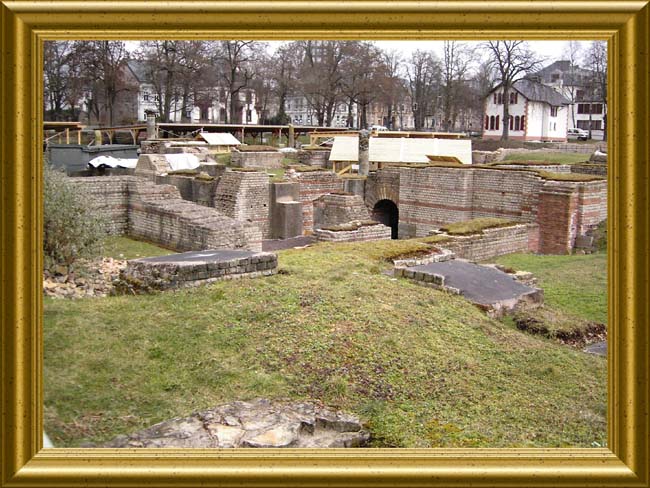 |
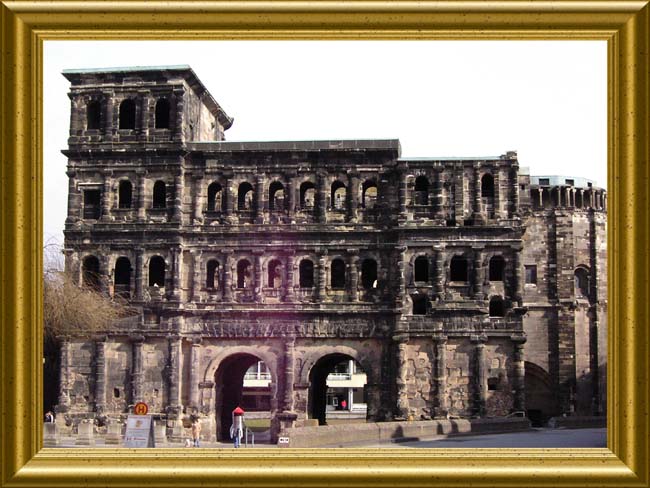 |
|
BUILDINGS
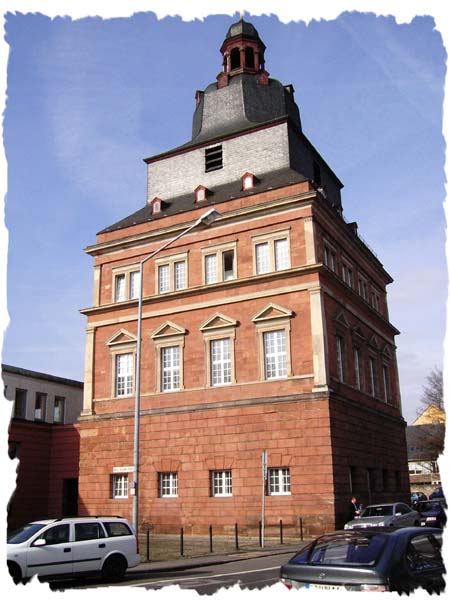
The Red Tower, part of the
Elector's palace. |
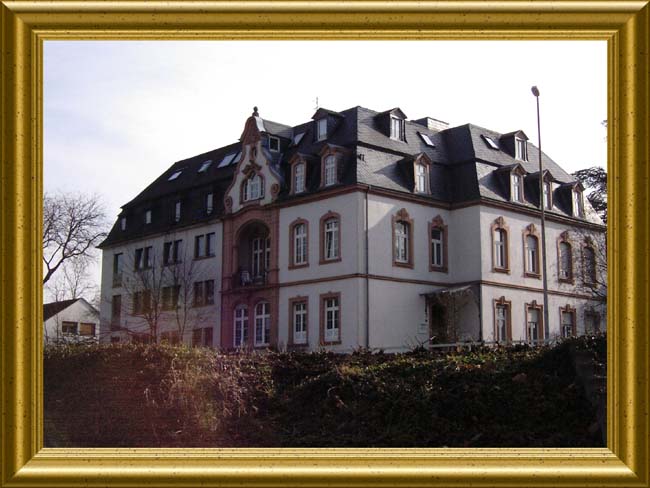
Grand house opposite the Imperial
baths. |
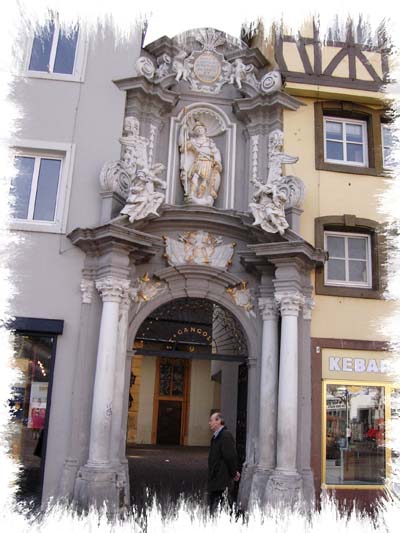
Entrance to St Gangulf's Church,
just off the market square. |
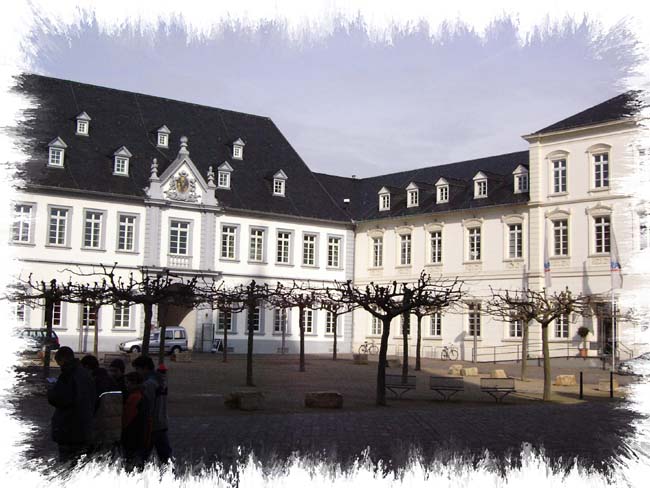
Administrative buildings opposite
the Cathedral |
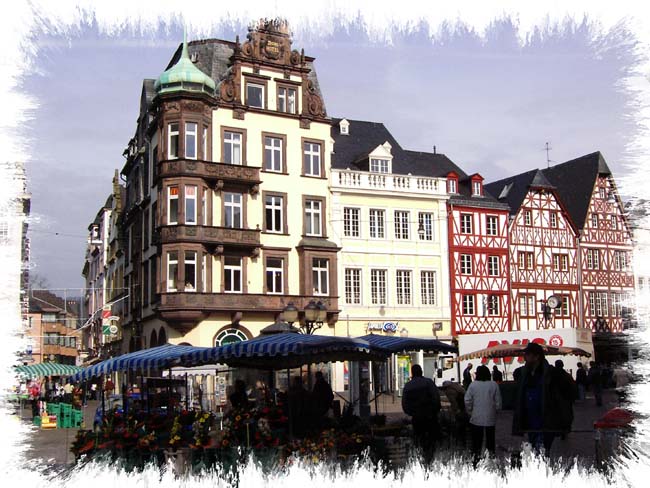
Market square, showing the
half-timbered buildings to the right. |
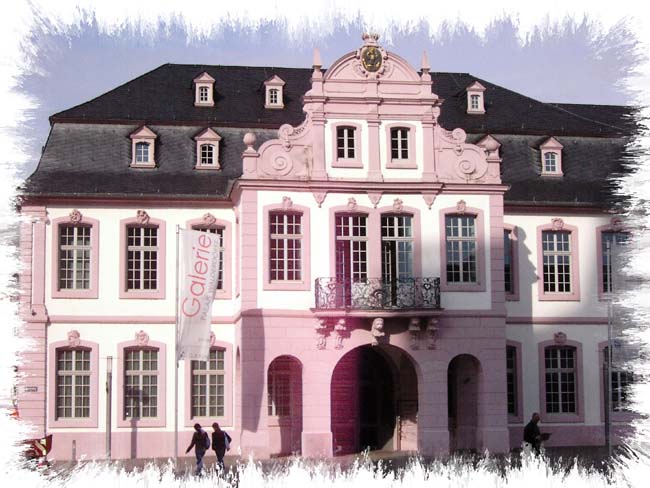
Gallery in the square opposite the
Cathedral |
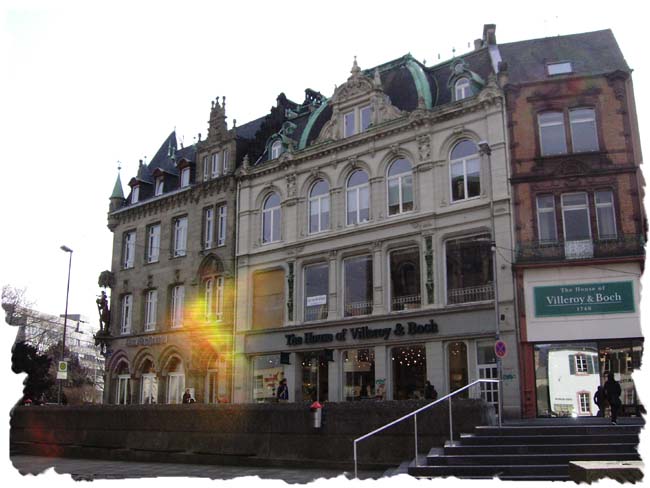
Many of the buildings in the
centre are large, solid, durable 18th and 19th century structures
such as these. The small details and craftsmanship are of a very
high order. |
STATUES
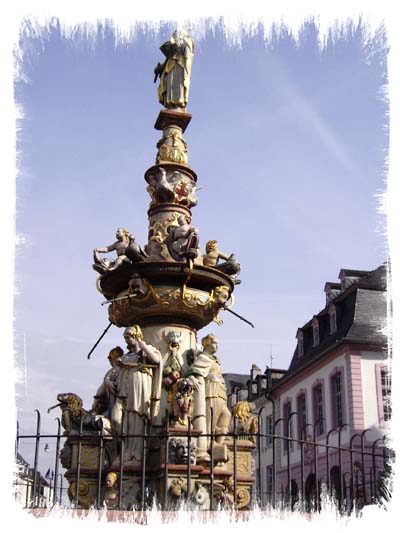
The St Peter Fountain, in the main square, was
built by H.R. Hoffmann in 1595. |
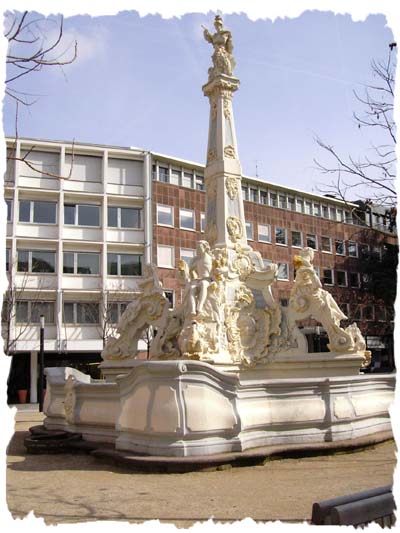
The newly restored St George Fountain, built by
J. Seiz in 1750. |
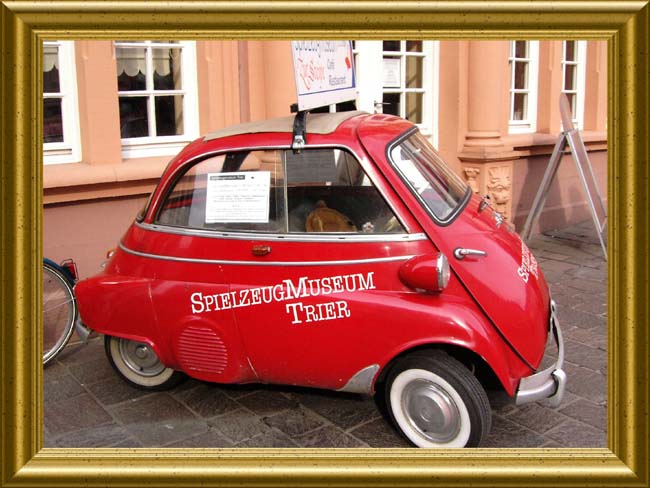
Old Messerschmitt bubble car. (You could
almost wear it instead of getting into it). |
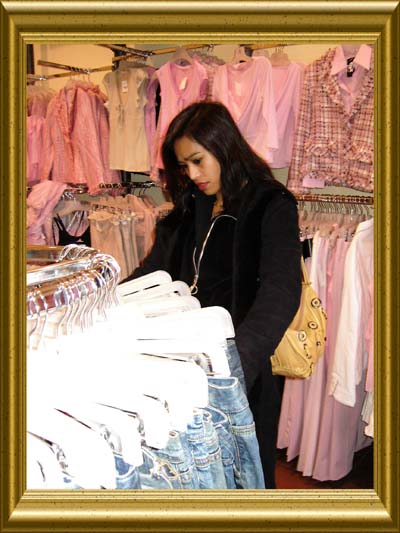
Ivy in her natural habitat (shopping!!!) |
DINNER AT THE HOTEL'S RESTAURANT
We had dinner again at the restaurant in the Deutscher Hof.
The waitress remembered us (and probably hurried off to demand danger money).
For some reason the other customers were amused by Charles, despite the chaos.
At one table was a very sleepy Bassett hound, which Charles loved, but it was
profoundly uninterested.





|